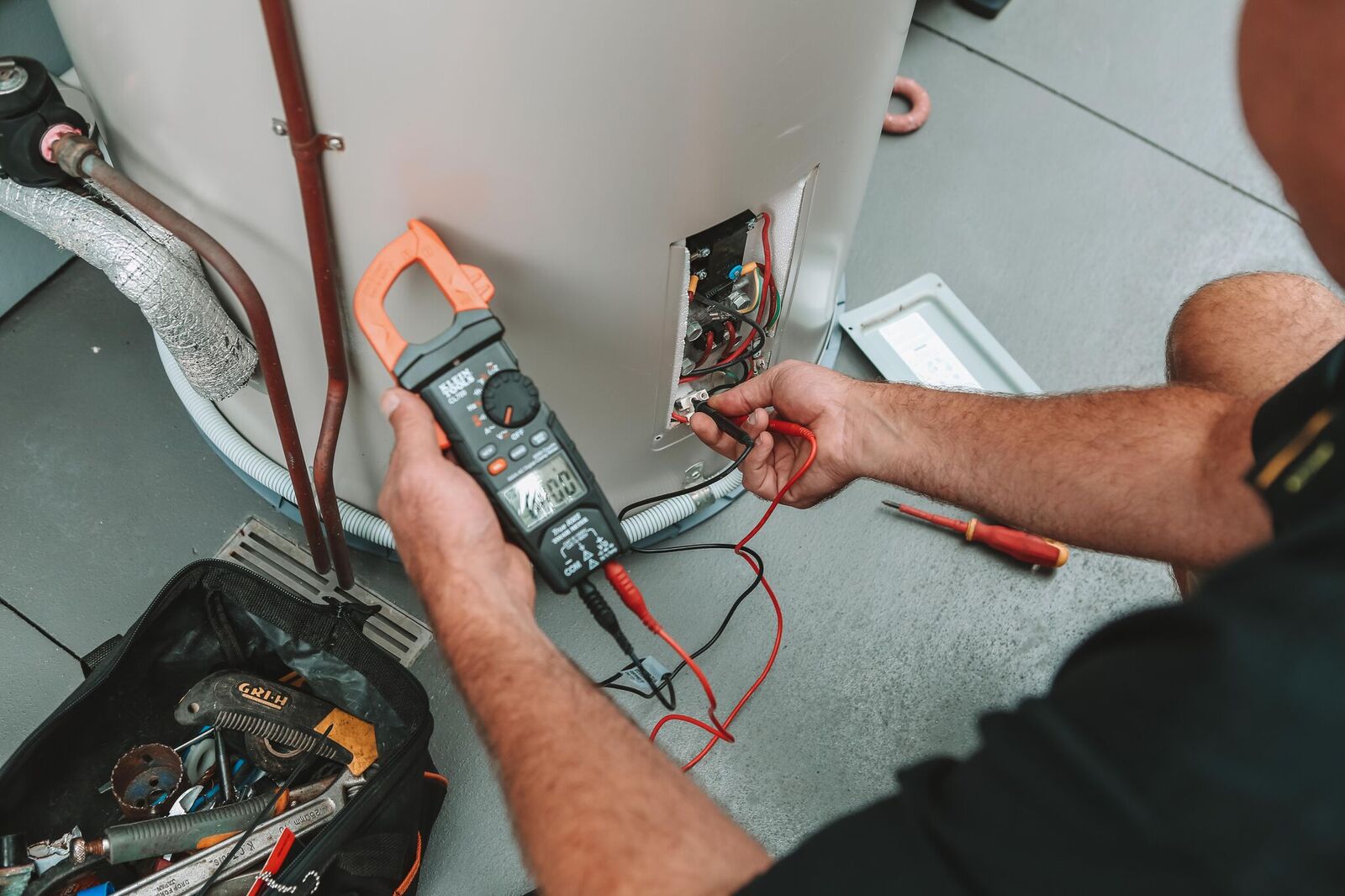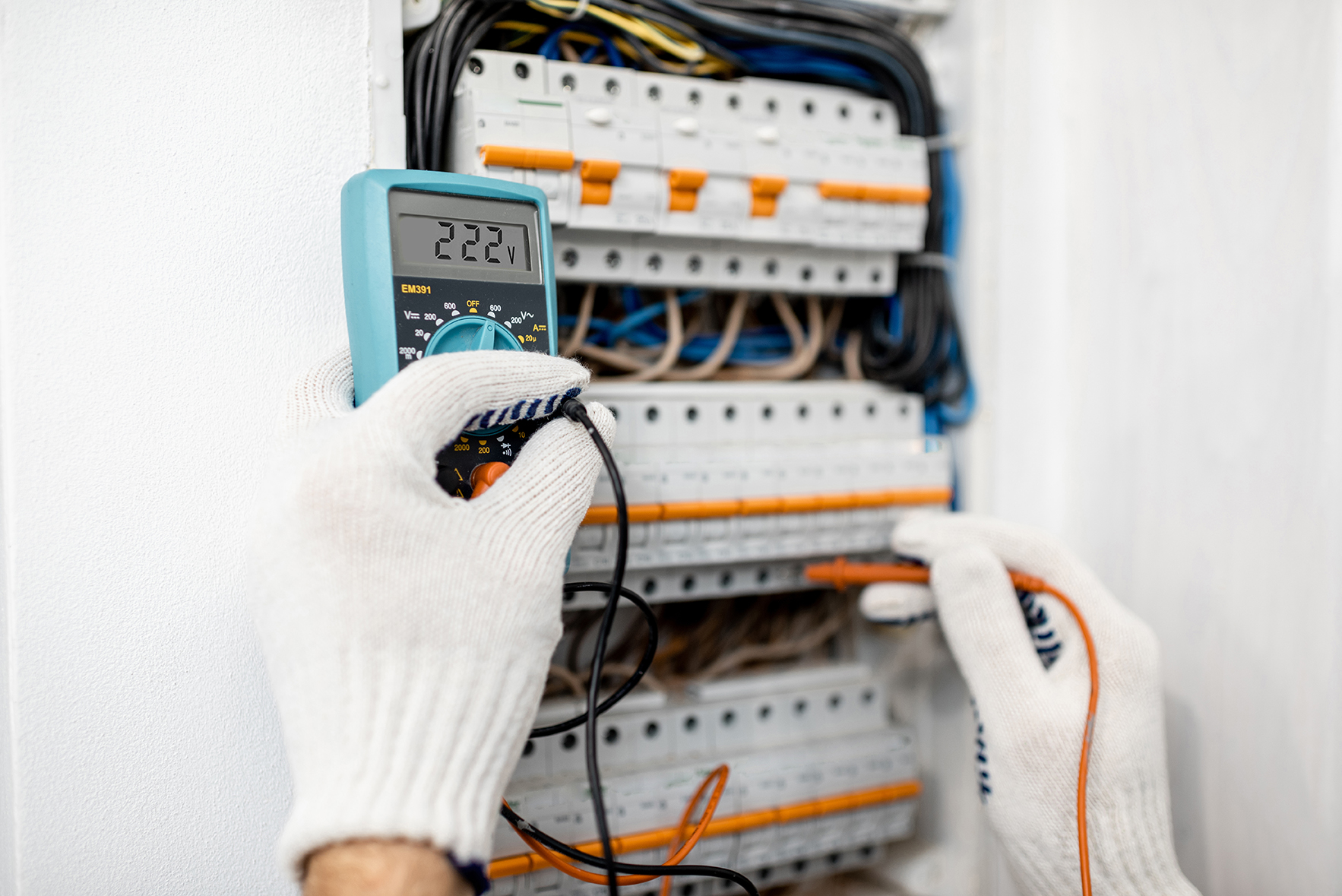Typical Electrical Troubles Every Homeowner Ought To Know About
Homeowners often experience different electrical troubles that can influence safety and performance. Concerns like flickering lights and stumbled breaker are much more usual than numerous understand. These scenarios can show much deeper electrical concerns that warrant interest. Understanding the indications and risks associated with outdated electrical wiring and dead outlets is important. What procedures can be taken to prevent these troubles? Discovering these common electrical problems could disclose essential insights for maintaining a risk-free home setting.

Flickering Lights: Reasons and Solutions
Why do some homeowners experience flickering lights? Flickering lights can be a common aggravation, often showing underlying electric problems. One primary cause is loosened or malfunctioning connections within lights or wiring, which can result in periodic power supply. Furthermore, utilizing high-wattage devices on the exact same circuit might create voltage fluctuations, leading to flickering or dimming. One more potential issue is an overloaded circuit, where also many devices draw power simultaneously, straining the electrical system. Obsolete or degraded electrical wiring can add to inconsistent electrical flow. In many cases, flickering lights might indicate a problem with the home's electrical panel or solution line. Homeowners ought to deal with flickering lights without delay to prevent prospective threats. Solutions might consist of tightening connections, redistributing device load, or getting in touch with a certified electrical contractor for a comprehensive assessment. Identifying the origin reason can assist ensure a risk-free and steady electric system in the home.
Tripped Circuit Breakers: What You Need to Know
Have homeowners ever questioned what triggers their breaker to trip all of a sudden? This typical concern typically develops from an overload of electric circuits, where way too many gadgets attract power simultaneously. In such cases, the breaker serves as a security device, disrupting the circulation of power to prevent overheating and prospective hazards. One more regular cause is a brief circuit, which takes place when a real-time cord contacts a neutral wire, creating a rise of electrical power that journeys the breaker. Ground mistakes can also cause tripped breakers; these occur when a live cable touches the ground or a grounded surface, posing major safety dangers. Homeowners need to regularly examine their use of high-wattage appliances to stay clear of overwhelming circuits. In addition, comprehending the feature of circuit breakers can assist them respond suitably during a trip, guaranteeing their home remains risk-free and well-maintained.
Obsolete Electrical Wiring: Indications and Threats
Outdated electrical wiring can position significant dangers to homeowners, commonly going unnoticed up until troubles arise. Residences constructed before the 1980s may still have light weight aluminum wiring or knob-and-tube systems, which are no more taken into consideration risk-free. Indicators of outdated electrical wiring include flickering lights, frequently stumbled circuit breakers, or shedding scents near outlets. These indications may suggest that the electric system is loaded down or deteriorating.Additionally, home owners could see blister marks around switches or electrical outlets, which can suggest overheating. The risk of electric fires significantly enhances with obsolete electrical wiring, as these systems were not developed to handle modern electrical lots. Property owners are motivated to have their circuitry inspected consistently, particularly when remodeling or including brand-new devices. By recognizing these signs early, they can avoid unsafe situations and maintain a much safer living setting. Upgrading to present electrical standards is a proactive action in keeping home safety and performance.
Often Blown Fuses: Troubleshooting Tips
Frequent blown integrates can indicate underlying electric issues that might stem from out-of-date circuitry or overloaded circuits. Home owners experiencing this trouble ought to first identify the home appliances connected to the impacted circuit. It is a good idea to prevent making use of several high-wattage devices concurrently, as this can lead to circuit overload. If the trouble persists, evaluating the fuse box for indications of wear or damage is critical; a malfunctioning circuit box might need replacement.Additionally, looking for loosened links within the circuit can assist stop future events. Home owners ought to additionally validate that the merges being utilized are of the correct amperage, as using an inaccurate fuse can worsen the problem. If these troubleshooting suggestions do not resolve the concern, getting in touch with an accredited electrical expert is suggested to review the electric system even more. Dealing with these problems immediately can aid mitigate dangers and ensure the safety and security of the home's electrical framework.
Dead Outlets: Typical Reasons and Repairs
When a house owner experiences a dead electrical outlet, it can frequently provide aggravation and confusion. Several usual reasons might bring about this issue. One constant wrongdoer is a tripped circuit breaker, which can be conveniently reset. Homeowners ought to inspect their electric panel to check if any breakers remain in the off position. One more opportunity is a malfunctioning electrical outlet itself, which might call for substitute. Furthermore, loosened circuitry links within the outlet can interfere with power flow, making examination essential.Sometimes, the trouble may come from an overloaded circuit, especially when several gadgets are connected. In such cases, rearranging the electric load can deal with the concern. Home owners must also consider the age of their circuitry; older systems might call for updates to official source meet modern-day electrical needs. If these steps do not correct the situation, speaking with a qualified electrical expert is advisable to assure security and appropriate medical diagnosis.
Electric Shocks: When to Be Worried
How can homeowners identify whether an electrical shock warrants issue? Home owners should first evaluate the intensity and context of the shock. A moderate static shock, learn the facts here now typically really felt when touching steel things, is typical and typically harmless. If the shock takes place while communicating with a plugged-in device or electrical outlet, it might show an extra serious issue.The area and frequency of the shocks are crucial. Repetitive shocks from the very same resource, especially in damp areas like cooking areas or shower rooms, can signal defective electrical wiring or insufficient grounding. Homeowners ought to additionally think about the sensation of the shock; a jolt that triggers discomfort or contraction is more startling than a plain tingle.If there's any unpredictability, it is recommended to speak with a certified electrical contractor. Disregarding prospective electrical threats can lead to severe security threats, including fire or extreme injury.
Overloaded Circuits: Avoidance and Precaution
Overloaded circuits position substantial risks in domestic settings, frequently bring about electric fires or equipment damages (Level 2 Electrician). House owners must acknowledge the indications of an overloaded circuit, such as frequently tripped breakers or dimming lights. Applying preventive security methods can assist minimize these dangers and ensure a more secure living atmosphere
Identifying Overloaded Circuits
What indicators suggest that a circuit may be overloaded? House owners ought to be alert for a number of crucial indicators. Often stumbled circuit breakers or blown integrates suggest excessive load on the circuit. Dimming or flickering lights, specifically when other home appliances remain in usage, can represent an inadequate power supply. Furthermore, outlets or buttons that feel cozy to the touch may show overheating, a possible fire risk. Uncommon humming audios from electrical outlets also require focus, as they can symbolize electrical issues. If home appliances operate inefficiently or fall short to begin, it might be an indicator of an overloaded circuit. Recognizing these signs early can help stop serious electrical issues and advertise a more secure home atmosphere.
Preventive Safety Practices
To preserve a reliable and secure electrical system, property owners should apply preventative safety methods that deal with prospective circuit overloads. One effective step is to stay clear of connecting a lot of tools to a solitary outlet, as this can see this site go beyond the circuit's capacity. Using power strips with integrated breaker can assist distribute power securely. Property owners must additionally consistently examine cords and devices for damages and change any kind of faulty equipment immediately. It is essential to assure that circuit breakers are operating correctly and to be knowledgeable about the complete power level being made use of in each circuit. Furthermore, consulting an accredited electrician for routine inspections can recognize possible concerns before they intensify, assuring a much safer living environment and lengthening the life expectancy of electric systems.
Frequently Asked Inquiries
Exactly how Usually Should I Have My Electrical System Inspected?
Normal examinations of electrical systems are suggested every 3 to 5 years. House owners must consider a lot more frequent checks if they experience concerns, take on remodellings, or stay in older properties to guarantee security and conformity.
Can I Repair Electrical Problems Myself or Hire an Expert?

What Are the Indications of an Electrical Fire Risk?
Signs of an electrical fire risk include often tripped circuit breakers, flickering lights, burning odors, blemished outlets, or warm, buzzing cords. Home owners ought to stay watchful and look for expert support if any of these signs exist.
Exactly how Do I Know if My Home Demands an Electrical Upgrade?
To identify if a home requires an electrical upgrade, signs include constant circuit breaker journeys, outdated circuitry, inadequate electrical outlets, flickering lights, and the visibility of older electric panels, suggesting possible security threats and inadequacy.
Exist Certain Security Tips for Do It Yourself Electrical Job?
When thinking about do it yourself electric job, one must constantly turn off power, use shielded devices, verify circuit capability, follow neighborhood codes, and seek advice from professionals for intricate jobs to guarantee safety and security and stop accidents. An additional possible concern is an overloaded circuit, where as well numerous devices draw power simultaneously, straining the electrical system. The risk of electric fires markedly boosts with out-of-date circuitry, as these systems were not created to manage contemporary electric loads. Regular blown merges can indicate underlying electric concerns that might stem from out-of-date wiring or overloaded circuits. To preserve a efficient and risk-free electrical system, property owners must execute preventive safety and security methods that deal with possible circuit overloads. Level 2 Electrician Sydney. Indications of an electric fire threat consist of regularly stumbled circuit breakers, flickering lights, melting odors, blemished outlets, or warm, buzzing wires